There has been some major progress on the Norton this week. The frame has been repaired, likewise the oil tank and the whole lot has been bundled off to Perth for powder and paint.
For a time, during the formative years of the motorcycle, the gearbox and engine were two separate units within the frame of the machine. They were cast out of great lumps of alloy and filled with pieces of hardened steel that were stressed into a rotating mass that was a bee’s dick away from self-destructing. Most of the time. Sometimes that little bee’s dick wasn’t enough and the engine would fly apart, not this little M50 however, she’s a survivor.
The engine and gearbox were cobbled together by a chain that was referred to as the ‘primary-drive.’ The primary-drive chain spins the clutch housing which transfers power into the gearbox, through the various cogs then to the rear-drive sprocket and secondary-drive chain, to the rear wheel and finally, the road. Squeezing this complicated power-train into the frame, whilst maintaining functionality, required dedicated engineering and creativity. Norton was no exception, they were actually very successful in meeting their objectives of producing a motorcycle that was functional, nimble and reliable. The evidence of this can be found in the little 350 single that, some 63 years later, is still with us. Having said all this, the Norton is no less or no more complicated than its contemporaries from Triumph, BSA and a host of other manufactures that were meeting the demand for reliable, exciting and affordable motorcycles. I’m a little biased so I’m going to say Norton was more successful here than its rivals.

The engine from the M50, note the primary-drive sprocket at the side of the crank-case.
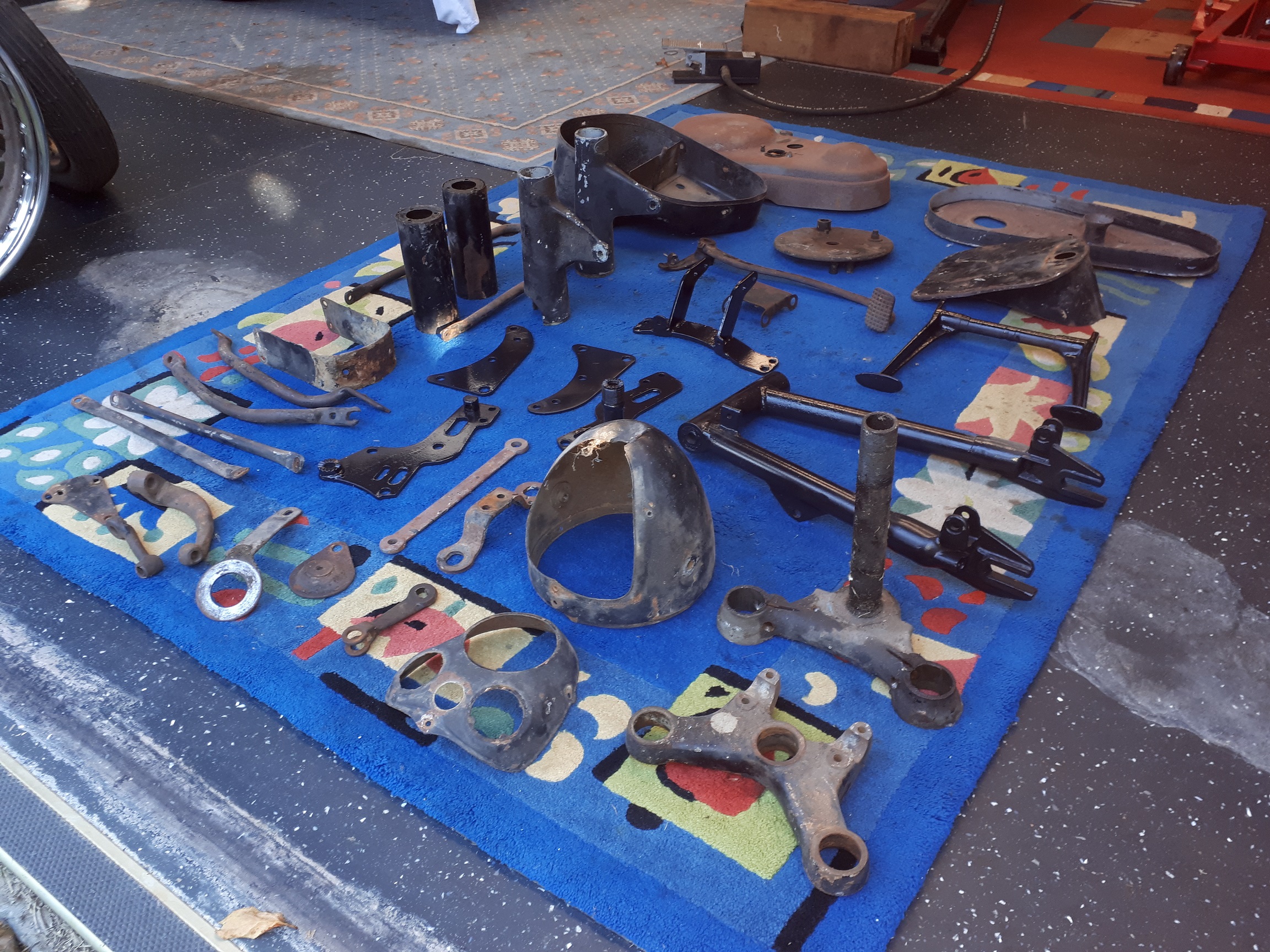
Combine hardware and tinwear prior to being sent off for paint and powder.
For the past couple of weeks I have been delving into the Pandora’s box of M50 parts, identifying what we have that will connect the engine and gearbox, what we will need, what needs to be repaired and what will go back into the machine as is. Working on this conglomeration of M50 hardware I have to consistently remind myself it is a 350 cc motorcycle. It is constructed in much the same way as my Triumph 650 twins. It’s hefty, solid and looks unbreakable. Sadly it’s not, but I digress.
Eventually, around the early sixties, someone thought to join the engine and gearbox in one unit and, in so doing, greatly simplified the design. The term ‘unit-construction’ was applied to this new form of motorcycle engineering and the bikes that went before were retrospectively called ‘pre-unit.’ Coming out of the factory in 1956 the Norton is well and truly in the pre-unit category of motorcycles. The bikes still had two drive chains, but the design enabled the bikes to be shorter, lighter and easier to manufacture.
Arranging an engine and gearbox in mid twentieth century motorcycle design required substantial hardware to keep everything in place. Admittedly, the bike develops less than 20 horsepower so one doesn’t expect the engine would exactly be bursting out of the frame, yet there are no less than six metal plates and eight bolts holding the engine and gearbox in place. For comparison purposes, my late-model Norton Commando has 90 horsepower and the engine is secured by four bolts. This perhaps suggests the little 350 might be a tad over-engineered but we have found a flaw.
One of the tubes on the side of the frame has a tiny crack in the paint. The frame is a substantial piece of kit so it’s hard to imagine it cracking, nevertheless, on grinding the paint away, the crack was proven to be more than a paint chip. It went down, well into the metal of the frame and required someone with better skills than I possess to repair it. Enter Rob Teale of Teale Custom https://www.facebook.com/tealecustom/ . To know Rob is to marvel at his skills in working metal, the man could build a Rolls Royce from a jam tin.
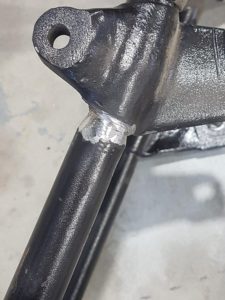
Metal has been ground away from the cracked frame in readiness for re-welding.
Like a dentist grinding away layers of tooth enamel, Rob was able to dig below the decay to clean metal and has repaired the frame with fresh welding. Likewise, the oil tank had to undergo a bit of the Teale magic and now both are as good as new, albeit a bright, shiny new that is exposed to the elements, inviting oxides to latch onto it like sugar to a tooth. To protect this raw metal, and all the other pieces that have been in a slow, elemental rot for some years, the whole lot has been packed off for a gleaming finish in glossy, gloss black (my terminology). Along with the frame, there’s an awful lot of pieces that make up this simple, small motorcycle that will be given a coat of powder and paint.
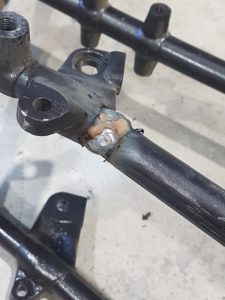
Rob has filled the broken frame tube with a fresh new weld.
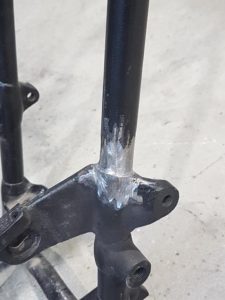
Welded, ground back and ready for a new coat of glossy black powder.
Powder-coat has its limitations. It’s great for hardware and robust pieces that are likely to take bangs and knocks but it’s not all that suitable for tinware. Tinware includes the fuel tank, mudguards and any other items that are constructed from sheet metal that will be on show when the bike is back together. Tinware really needs to be painted, particularly when it’s been dented and requires filler. Powder over dents looks hideous and nothing grabs the eye more than a shiny dent. So, new maxim: hardware powder, tinware paint.

The oil tank cap was a bit rough and needed repairing.
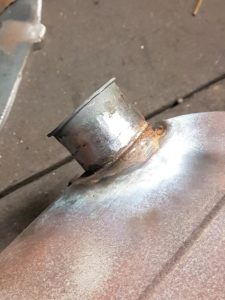
Oil tank is done and ready for painting.
-
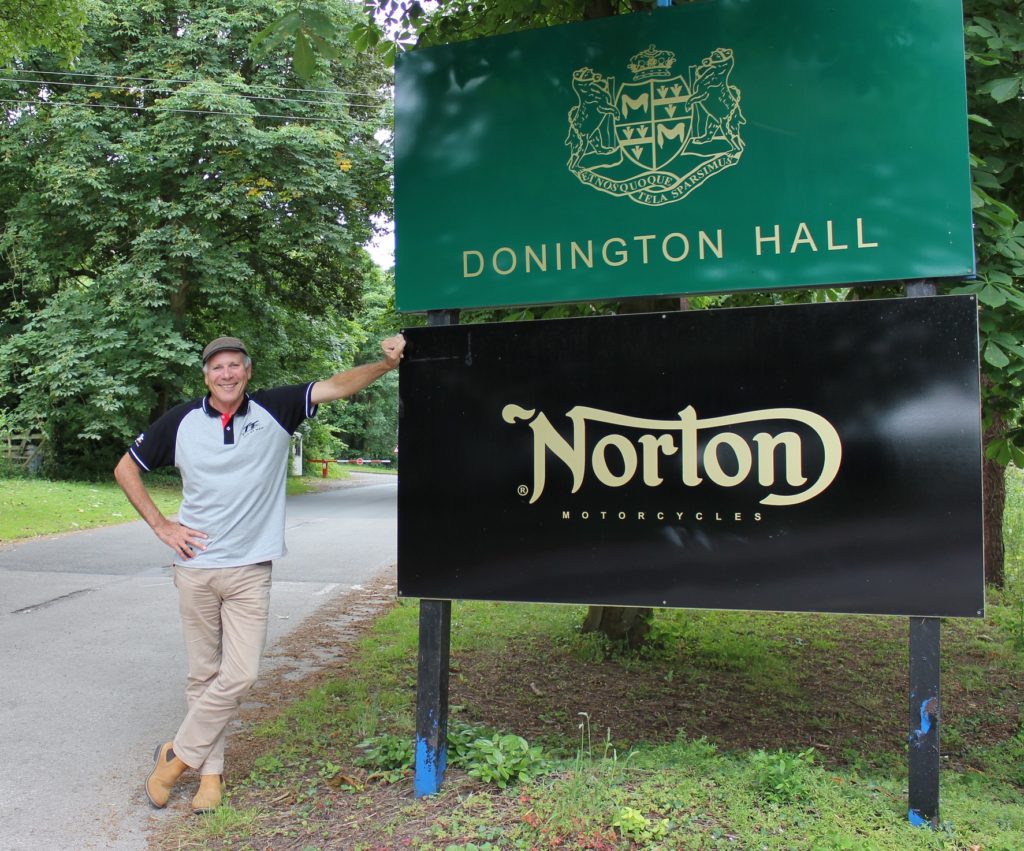
We love our Nortons at the Motor Shed. Here’s a picture of Dan at the Norton factory in 2018.
- .
Like Nortons?
Read more about our visit to the Norton factory at the Bike Shed Times.
Read more about our modern Norton Commando here
Read more about our Triton here.
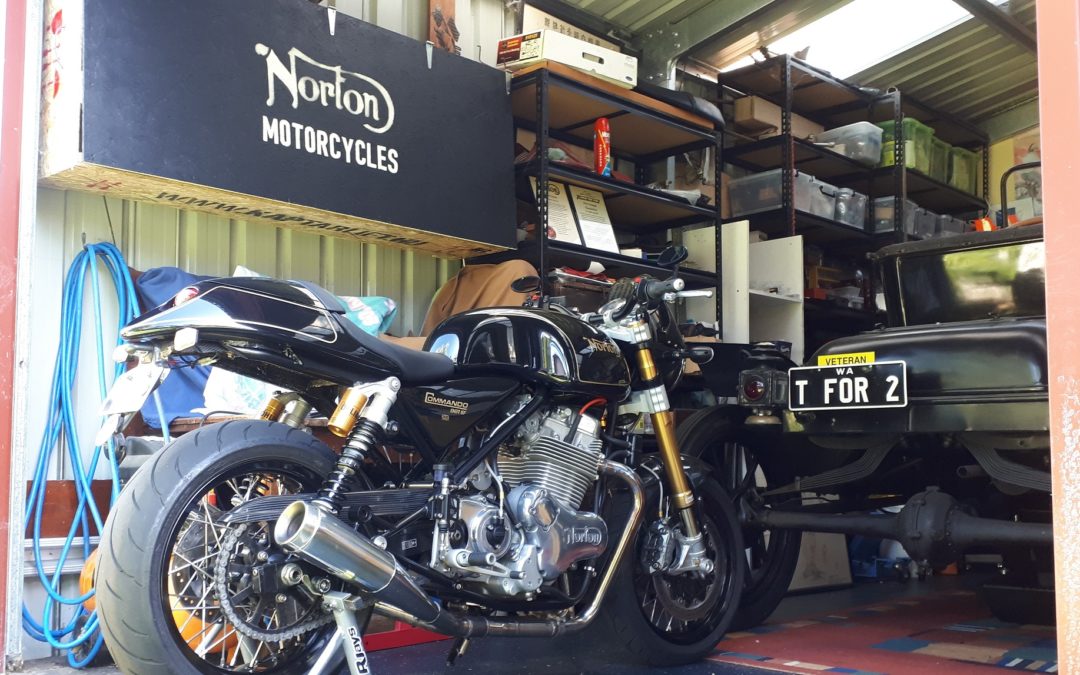





Well written Dan. I am sure Chris would have been over the moon reading this and looking forward to the restored beast. I myself am now shaking in my boots with the expectation that I have to ride this at the Albany hill climb.
All I can say is they better make sure I am on the road by myself or it may be carnage
It’s a Norton Kerry – you’ll be fine 🙂
Your descriptions are incredible.
Thanks for all you are doing.you are awesome.Chris is impressed with the progress.
Chris is struggling day by day with the difficulties of bain cancer so this project is giving him some joy.
Thanks Dan
Shirley Busby
Thanks Shirley, it’s my pleasure to be trusted with such an important restoration.